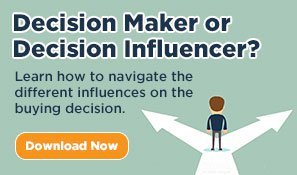 Sales tend to stall. Every salesperson with a pending list realizes that this week looks too much like last week. As does every sales manager who's listened through the excuses about why this or that prospect is still pending.
Sales tend to stall. Every salesperson with a pending list realizes that this week looks too much like last week. As does every sales manager who's listened through the excuses about why this or that prospect is still pending.
“The journey of a thousand miles begins with a single step,” ~ Lao Tzu
We know that to accomplish big things, we need to break them down into smaller tasks. But, we’re often too busy to actually slow down and apply what we already know. Many companies have a defined sales process, some more structured than others, and it’s the lack of following that process that is stalling most sales.
- If you’re a salesperson, you should know exactly what step you are at with each client.
- If you’re a sales manager, you should accept nothing less than your people knowing exactly what step each prospect is at on their pending lists.
Seems simple, right? Just follow the process, and everything is fine. Yes, but what does that mean? Let’s take a look at our six steps of the sales process. You may have your own, and you may use different names, but the concepts will still apply.
IDENTIFY
Finding good leads is not as simple as it seems. You don’t want just any prospect; you want a new, high-potential account. Starting with poor quality accounts is why they stall later. We use a Target Business Profile Filter to qualify leads. What do you use? Are you using it? If you are, and they qualify as a high potential account, move to the next step.
CONNECT
Connecting on LinkedIn is a great start. The better the prospect, the more selective they often are, so you need to have a “valid business reason” or VBR for connecting.
A good way to create a VBR is with an insight that the decision maker finds valuable. Once you move to “OK, I’m interested enough to meet with you in person or online,” then you’re ready for the next step.
DISCOVER
This step is often called a “needs analysis meeting.” Needs are still important, but what you want to discover is “desired business results.” The best way to do that is to lead with more insights, master the art of asking questions, and think like the owner.
We have a 4As Needs Analysis process. What is yours? Are you using it? If you stall here, odds are you didn’t take good notes and only know what you want to sell, not what they want to accomplish. But if you do know, move to the next step.
ADVISE
So, this prospect has desired business results that you and your company can deliver. Now, you need to choose the best solution path. We have three we recommend, and you may have some too, but at least some should offer room to tailor the solution within specific criteria. A lot goes into the Advise stage, but perhaps the biggest is to “remove surprises.” Because if you haven’t, then don’t move too fast to the next step.

CLOSE
At this point, you have a solution that has a great chance of delivering on their desired business results. They have participated in the creation of the solution, so that when you present the proposal, there won’t be those awkward surprises. You might say it’s a no-surprise proposal. Did you get a Closed-Won or a Closed-Lost? That will determine your next step.
GROW
If it’s a Closed-Won, you will want to implement the solution. As you deliver results, you’ll want to discuss the results. Especially when they are good, but also even when they are not. Adjust along the way as needed. The next step is to discover the next assignment.
If a prospect is stalling, maybe you need to back up a step. Maybe you didn’t CONNECT with the right person. Maybe you didn’t DISCOVER the real desired business results. Maybe your attempts to ADVISE were weak.
There is obviously more that goes into each step, and you might say there are steps within the steps. Knowing where each prospect really is in the process makes it easy to know the one, next, right step to sales success.



